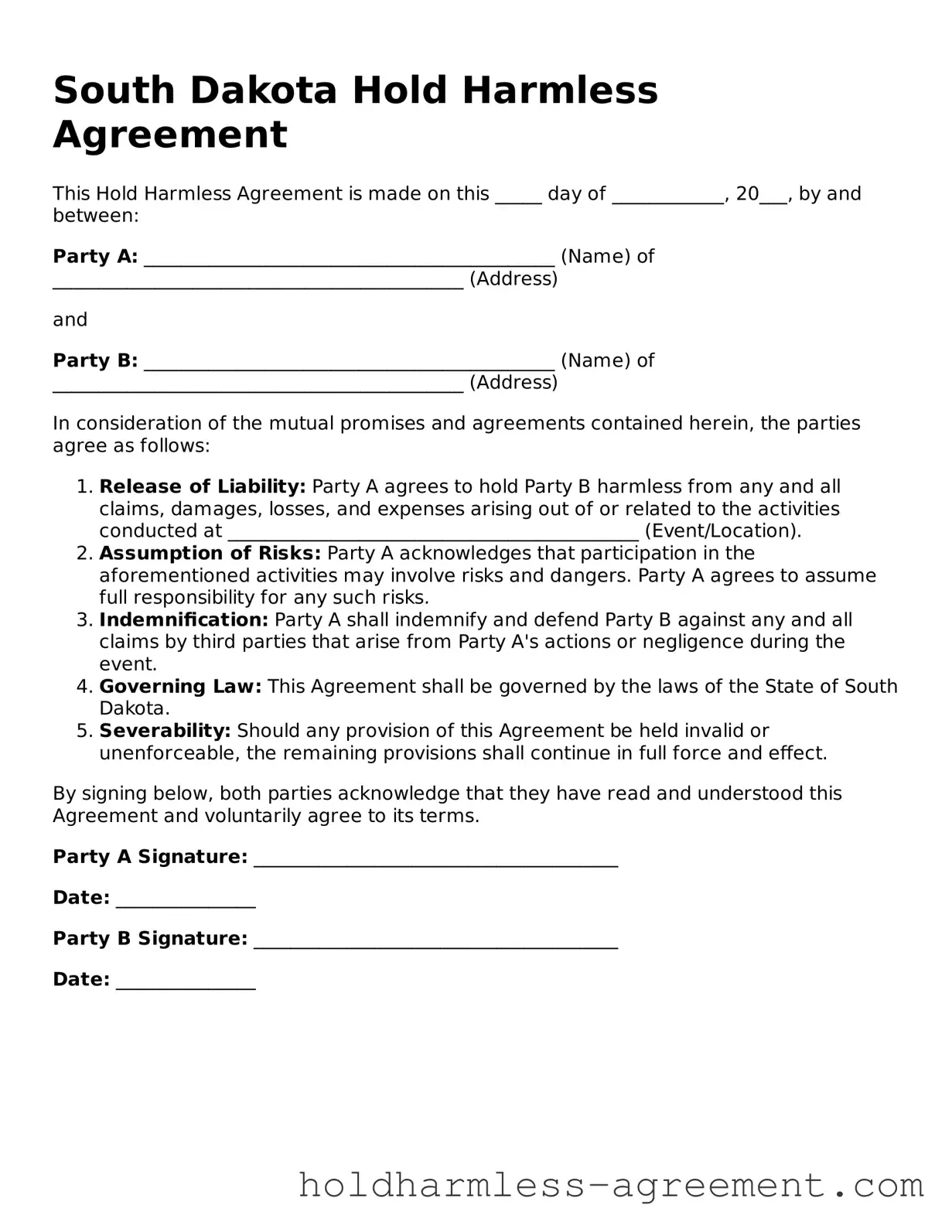What is a South Dakota Hold Harmless Agreement?
A South Dakota Hold Harmless Agreement is a legal document designed to protect one party from liability for any damages or injuries that may occur during a specific activity or event. This agreement is often used in various situations, such as rental agreements, events, or activities where one party may be exposed to risks. By signing this document, one party agrees to assume responsibility for any potential claims that could arise, thereby shielding the other party from legal repercussions.
Who typically uses a Hold Harmless Agreement in South Dakota?
Hold Harmless Agreements are commonly utilized by a variety of individuals and organizations, including:
-
Property owners renting out space for events
-
Businesses hosting workshops or classes
-
Non-profit organizations organizing community events
-
Contractors and service providers entering into agreements with clients
Essentially, anyone looking to mitigate risk associated with activities that could lead to injury or property damage may find this agreement beneficial.
What are the key components of a Hold Harmless Agreement?
A comprehensive Hold Harmless Agreement typically includes the following elements:
-
Identification of Parties:
Clearly state the names and roles of the parties involved.
-
Scope of Activities:
Outline the specific activities or events covered by the agreement.
-
Assumption of Risk:
Acknowledge that the participating party accepts the risks associated with the activities.
-
Indemnification Clause:
Specify that one party agrees to indemnify the other against any claims, damages, or losses.
-
Governing Law:
Indicate that South Dakota law will govern the agreement.
Including these components ensures clarity and helps prevent misunderstandings between the parties involved.
Is a Hold Harmless Agreement enforceable in South Dakota?
Yes, a Hold Harmless Agreement can be enforceable in South Dakota, provided it is drafted correctly and meets legal standards. Courts generally uphold these agreements as long as they are clear, reasonable, and not contrary to public policy. However, certain limitations may apply, especially in cases of gross negligence or willful misconduct. It is advisable to consult with a legal professional to ensure the agreement is valid and enforceable.
How does a Hold Harmless Agreement protect me?
This agreement serves as a protective shield, allowing you to engage in activities without the constant worry of potential lawsuits or claims. By signing the agreement, you are acknowledging the risks involved and agreeing not to hold the other party responsible for any resulting injuries or damages. This can provide peace of mind and encourage participation in events or activities that might otherwise be avoided due to liability concerns.
Can a Hold Harmless Agreement be modified after it is signed?
Yes, a Hold Harmless Agreement can be modified, but both parties must agree to the changes. It is crucial to document any modifications in writing and have both parties sign the revised agreement. Verbal changes are typically not enforceable, so maintaining a clear, written record is essential to ensure that all parties are on the same page regarding their responsibilities and liabilities.
How can I create a Hold Harmless Agreement?
Creating a Hold Harmless Agreement can be straightforward. You can find templates online, but it's important to customize the document to fit your specific needs. Ensure that it includes all necessary components, as mentioned earlier. If you are unsure about the language or provisions, consulting with a legal professional can help you draft an agreement that adequately protects your interests while complying with South Dakota law.
